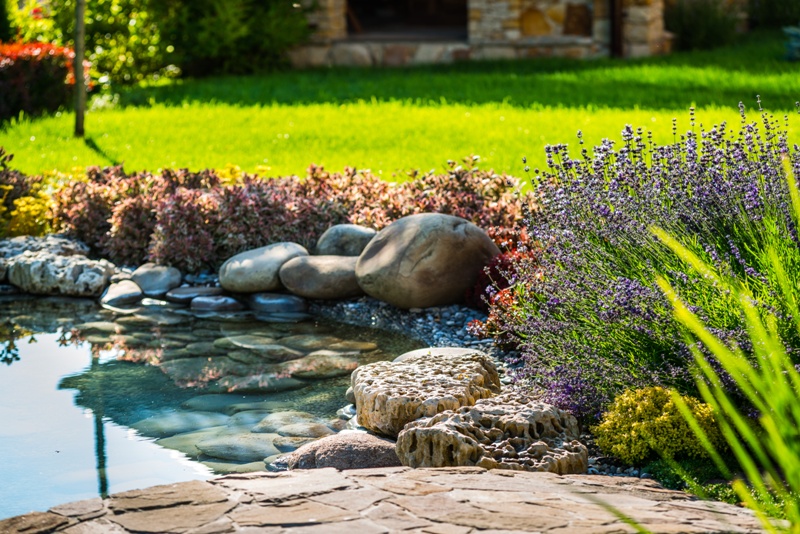If you love nature, then creating an eco-friendly backyard should definitely be on top of your list of priorities. This is significantly more important right now when safeguarding the environment is vital than ever before. In addition to protecting nature, an eco-friendly backyard is a perfect place where you can relax and unwind with your friends and family.
But, making such a change to your garden to make it an environmentally friendly oasis isn’t that simple. Because this project can feel somewhat overwhelming and time-consuming, here’s a guide that will help you identify the ways to make your yard eco-friendly:
1. Choose Eco-Friendly Materials
The main goal of creating an eco-friendly garden is to lower your carbon footprint. One of the best ways of achieving this is by opting to use green materials and using no or little cement. Instead, it would be best if you opt for materials such as log walls, straw bales, rammed earth, woven willow, oak, and cob (clay and straw). To decide which of these materials best suits your project, you should consider its durability and cost. It’s best to choose materials that are easily accessible in your locality to cut down on the total cost.
When making fences and patios, you can choose to go with materials including bamboo, natural stone, recycled wood, and metal. Likewise, consider going with old reclaimed furniture or buying used patio furniture as this not only saves you money, but also lowers environmental waste.
2. Use Native Plants

The best plants to get for your garden are native plants and trees. And, being native from the area, these trees and plants will do an excellent job attracting local wildlife, such as butterflies and birds, as they’re better suited to the local environment. You also don’t need to use additional pesticides or fertilizers because the trees and plants are used to the region’s soil. Moreover, you don’t need to frequently water the plants because they’re already well-adapted to the weather conditions. As a result, this makes the whole task of maintaining them a lot easier for you.
3. Harvest Rainwater
Every once in a while, you’ll need to water your flowers, vegetables, and plants. If you’re environmentally conscious, the best solution would be harvesting rainwater rather than using your home’s water supply for outdoor use. To do this, all you need to do is install gutters to collect rainwater from the roof runoff. Other handy tools that help in harvesting rainwater include rain chains, cisterns, and rain barrels.
By harvesting rainwater, you’ll be able to minimize the runoff of stormwater, thereby reducing flooding and soil erosion. If you’re uncertain, you can look for a great post to read about how to go about harvesting and conserving water in your garden to gain valuable insights.
4. Don’t Kill All The Bugs

It’s normal to consider freeing your garden from all bugs, such as snails and caterpillars. However, some bugs, such as ladybugs, help in sustaining the healthy ecosystem in your garden. These bugs also act as natural defenders of your garden from other harmful insects, hence, a natural and environmentally friendly option to pesticides. For instance, ladybugs eat mealybugs, leafhoppers, scales, aphids, and mites, which can be detrimental to your garden.
With such harmful insects kept at bay, you never have to worry about your garden getting wiped out quickly. Therefore, you get to have a flourishing and attractive garden free from harmful pests.
5. Start Composting
Another way of making your garden eco-friendly is by recycling green waste. The advantage of doing this is you don’t have to spend a penny. You can then use the subsequent compost to make a natural fertilizer to provide your garden with additional nutrients.
To make the compost, you need to have some soil set aside at a partly sunny area. If you don’t want to see the compost pile, then consider investing in a compost bin. After that, you can start composting. The materials to use in this process include:
- Vegetable peelings
- Egg boxes
- Lawn clippings
- Vacuum cleaner contents
- Teabags
- Hedge trimmings
- Leaves
- Shredded cardboard and newspaper
- Wood shavings
However, you must never discard animal waste into the compost. With the wastes in your compost, the next thing to do is creating a suitable environment for the compost-making bugs, and then leaving the compost for between six to nine months. Once this period lapses, you’ll have a nutritious and rich compost you can use in your garden.
6. Takeaway
After deciding to go green, one of the first places you should start working on is your garden. If this is your goal, discussed above are ways you should implement to make your garden eco-friendly. As a result, this makes it the ideal place to go chill whenever you want to enjoy some time with Mother Nature.






